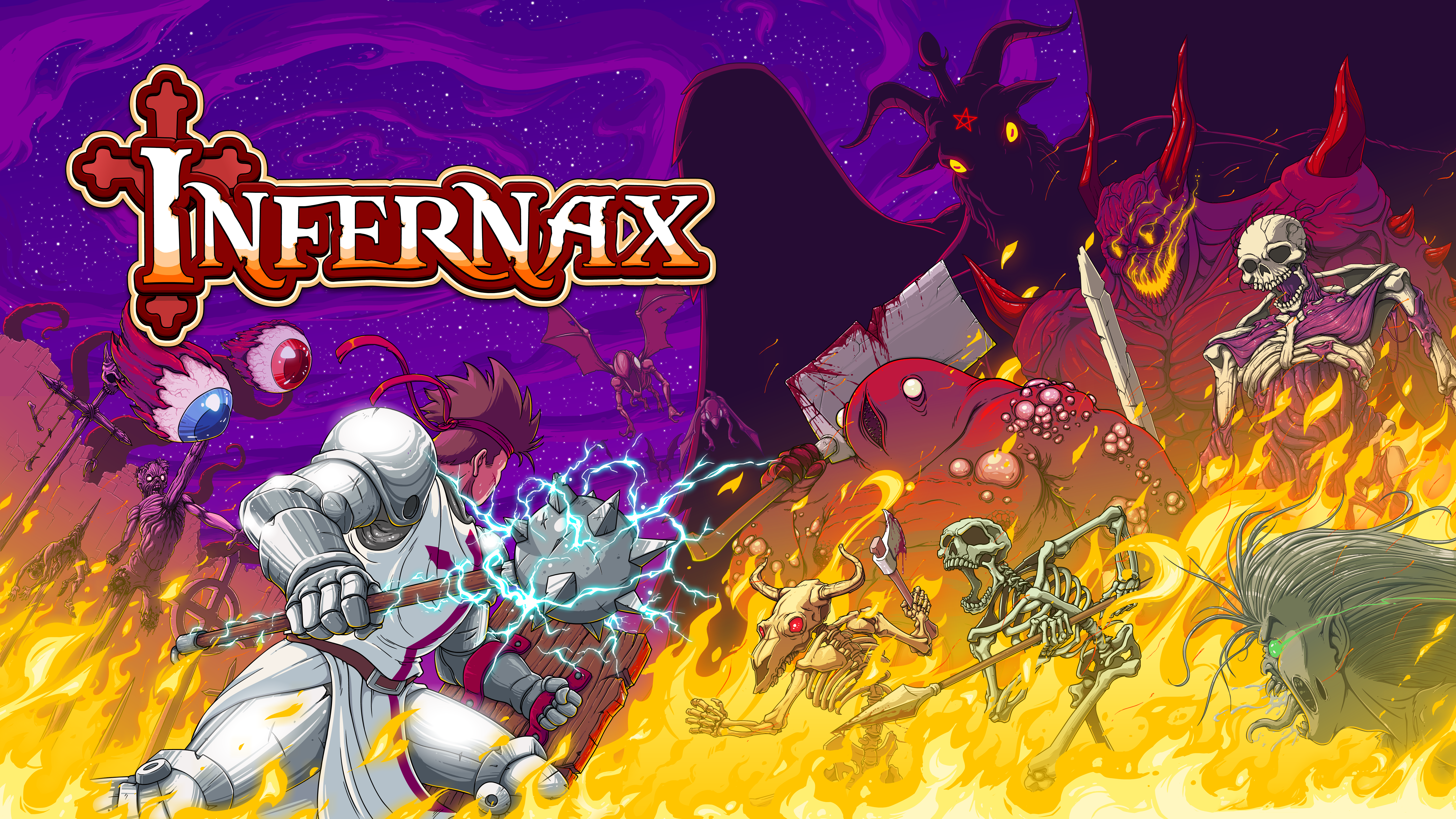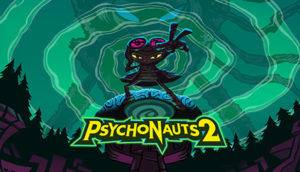
What does a Metroid-inspired game have to do to stand out amidst an endless deluge of chip-tune-infused retro throwbacks? Do you build an ingenious and expansive non-linear world that envelops the player like Hollow Knight? Do you take the Blasphemous route, creating a space so inundated with specific cultural references that it realizes a singularly evocative space? Or do you take some other uncharted path, forging deep into the depths of experimental game design to find an undiscovered oasis in a subgenre that has been thoroughly backtracked, mapped, and cataloged?
Bezerk Studio’s riff on this familiar template, Infernax, does not take this untrodden path. Just about every element, every mechanic, every stray idea has also been encountered elsewhere. You will likely see the shambling skeletons, the creeping ghouls, the 2-D platforming, and the exaggerated elongated attack animations of the protagonist and say, “Hey, this game looks like Castlevania.” This comparison even works along different axes. The tile-based map fixed to the corner of your screen and the relative freeform nature of its exploration calls to mind Symphony of the Night. And the first time a blueish full moon appears from behind a host of clouds to herald the turn of a day-night cycle, you may be reminded of when it was a terrible night to have a curse. As a spear bounces harmlessly off your constantly outstretched shield, you may think of Zelda II, or a series of malevolent platforming challenges might make you curse like you’re playing one of those unhinged segments from early Mega Man titles.
The point is Infernax does not attempt to hide its inspirations. It is awash with nostalgia for old-school gaming, a pastiche of the weird little innovations and elements we love from these older titles. And yet, while Bezerk Studio’s latest lacks originality, it largely makes up for this by smelting its myriad influences into honed retro platforming bliss. It sands down the frustrating difficulty spikes that defined many NES standouts, presents a well-crafted Metroidvania world, and features some truly malicious segments of blistering 2D action. The result is a title that borrows equally from both old and new and that, while not revolutionary, is an upstanding example of the form.

As for the game’s story, much like its pixelated 80’s forbearers, narrative isn’t the focus here. A brief intro sequence sets the stakes. We follow Duke Alcedor, a weary ex-crusader who returns to his duchy after several years on the frontlines. However, when he alights from his boat, he finds his realm overrun by all manner of monsters, ghouls, plotting cultists, and weird-looking bugs. He learns that an elder demon seems to be sowing chaos and that the only way to enter its abode is to break a seal protected by five crystal McGuffins hidden in heavily fortified dungeons.
However, you will quickly find that routing this demonic brood is every bit as difficult as one would expect. Beyond its other layers of referential minutiae, perhaps the element most reminiscent of old-school games is that Infernax is dang hard. As you attempt to conquer the five dungeons, you will be stabbed, bludgeoned, incinerated, and altogether atomized by every manner of monster and obstacle imaginable. Luckily, the game’s handling of difficulty is one of its best fusions of old and new, as it lets you customize your sadomasochist experience. Are you a fellow sicko who only grows more powerful as you trek the umpteenth hateful swamp in a Souls game? Then the developers’ recommended Classic difficulty will likely be for you. Here, when you die, you lose all of your progress since the last time you saved. There is also a Casual mode for less self-flagellating individuals, which mercifully sets up checkpoints and provides an extra life.
Thankfully, the game passes the “tough, but fair” sniff test even on its Classic setting. Movement feels snappy, avoiding the fixed jump angles and animation priority of early Castlevania titles. While there is still space for those wonderful tank-controlling abominations of game design (go play Rondo of Blood if you haven’t, it holds up), the obstacles in Infernax require more dexterity. While jumps have a fixed height, there is a generous amount of air control which lets you weave between onslaughts of traps. And when it comes to your bloodthirsty adversaries, demons will perform clear wind-ups before attempting to separate your head from your body, and boss attack patterns are legible and reasonable to avoid.

While quite a few tricky monstrosities block your path, and many of these encounters are a delight, the game’s most imposing challenges are usually vicious platforming segments. During one stretch, you have to alter your jump’s height by intentionally vaulting into the ceiling, carefully timing a series of leaps of faith onto rapidly descending platforms. At another juncture, you have to carefully navigate spinning waterwheels as a swarm of floating eyeballs attempts to nudge you towards a watery grave. Many of these moments require a combination of planning and skillful execution, and while they can evoke the merciless design of some oldies, they are never entirely overwhelming or unfair. Additionally, although dungeons lack save points, in most cases, you can backtrack to the entrance and save your progress, making things far more manageable.
However, if things ever feel too overwhelming, you can always take a break to explore the semi-open world and solve some side quests or look for tools to bolster your survivability. Another contemporary influence here is the abundance of progression systems. Killing mobs nets experience points and gold that you can spend on health points, mana, and attack power. Each town features shopkeepers with an assortment of permanent boons for sale, such as armor, weapon refinements, and new incantations. You can even buy a few extra lives, which will then replenish at save points. The in-game economy is well-tuned, and I was able to just barely purchase everything in the shops as I headed towards my confrontation with the final boss.
While your trek through the treacherous Duchy of Upel follows a somewhat linear path, as each dungeon holds an upgrade necessary for accessing the next one, there are enough wayward passages and optional adventures to create some sense of discovery. Additionally, the proceedings branch somewhat as a result of the choices you make. These have a surprisingly substantial effect on the future, eventually fragmenting the story towards different conclusions that alter stretches of gameplay and lead to unique abilities.

The only element that hampered my journey through this doomed province was that I never clicked with the game’s sense of style and tone. While I love gore-infused camp as much as the next Raimi fanboy, Infernax’s hyperviolence feels more puerile than delightfully gross. Upon death, enemies explode into mounds of viscera and expel disgusting discharges. You will witness your subjects dismembered and reduced to piles of red paste. Being killed by each enemy or obstacle results in a unique death animation, and you will see Alcedor mutilated in every way imaginable. While nothing is inherently wrong with this, as a game like Doom (2016) reiterated, there is an art to riding the line between self-seriousness and self-awareness in this gory context. Despite its bevy of easter eggs and the occasional gag, Infernax can take itself too seriously despite its general ridiculousness. And without an accompanying wink and nod towards its pixelated carnage, things can sometimes veer into the mean-spirited.
For instance, at one point, you come across a caged former human who is jeered at by a mob of provincials that encourage you to burn them alive. At another point, a character (who, to be fair, is not a great guy) pees his pants as he hanged to death. And given its 8-bit mold, the game is also slightly talkier than I would have expected, which is a problem because its quest-givers and side characters are thoroughly flavorless. As much as I wanted to shoot devil horns and cackle along with the absurdity, I found myself speeding through the parts where people were saying words so I could get back to the good part. All that said, much like the titles of gaming’s past, I can deal with some weak writing considering how well everything else comes together.
While Infernax may not be original, it takes lessons from modern game design to hone its retro influences into a generally exhilarating metalhead Metroidvania. Its platforming crucibles, chaotic boss fights, and crushing dungeons offer a welcome challenge, while its multiple difficulty settings and bevy of side activities provide a release valve to those who want it. While someday the endless nostalgia of the retro-revival movement in gaming may grow tiresome, Infernax further proves that with competent enough execution, familiar systems can feel good as new.
Rating: 8.2/10







